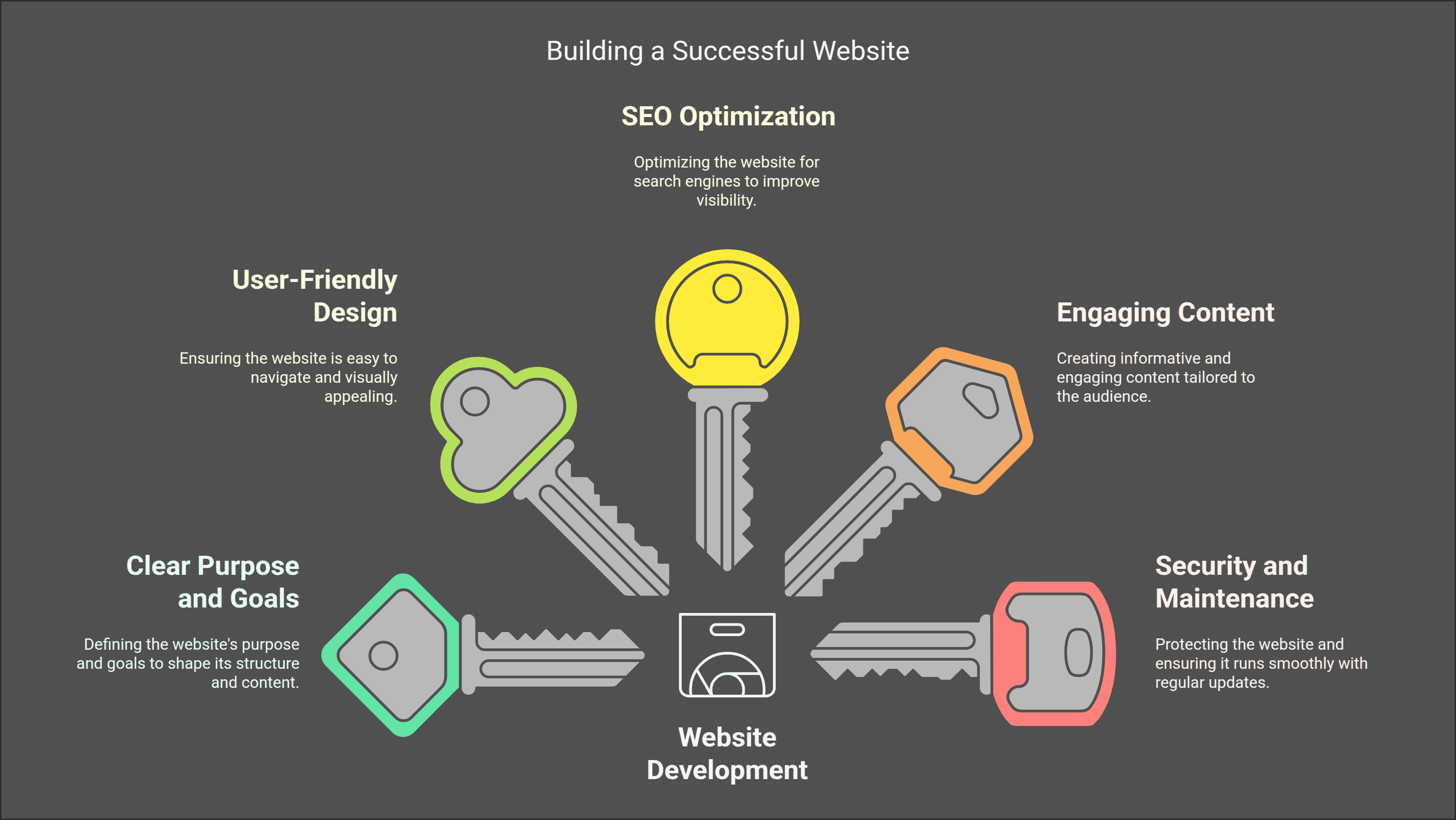The Ultimate Guide to Website Development: Boost Your Business with a Professional Online Presence
In today’s digital-first world, your website is often the first impression customers have of your business. A professional, well-designed website isn’t just a luxury—it’s a necessity. Whether you’re a startup, a small business, or a large enterprise, having a strong online presence can make or break your success.
This guide will walk you through everything you need to know about website development, from planning and design to launch and optimization. By the end, you’ll have a clear understanding of how to create a website that not only looks great but also drives results for your business.
Why Website Development Matters
Your website is your digital storefront. It’s where potential customers learn about your business, explore your products or services, and decide whether to engage with you. Here’s why investing in professional website development is crucial:
- First Impressions Count: A well-designed website builds trust and credibility.
- 24/7 Accessibility: Your website works for you around the clock, reaching customers anytime, anywhere.
- Competitive Edge: A professional website helps you stand out in a crowded market.
- Business Growth: A functional, optimized website can drive traffic, generate leads, and increase sales.
Key Elements of a Successful Website
Creating a successful website involves more than just aesthetics. Here are the key elements to consider:
1. Clear Purpose and Goals
Before diving into design, define the purpose of your website. Is it to sell products, generate leads, or provide information? Your goals will shape every aspect of your website, from its layout to its content.
2. User-Friendly Design
A great website is easy to navigate and visually appealing. Key design principles include:
- Responsive Design: Ensure your website looks great on all devices (desktops, tablets, and mobiles).
- Intuitive Navigation: Make it easy for visitors to find what they’re looking for.
- Consistent Branding: Use colors, fonts, and imagery that reflect your brand identity.
3. SEO Optimization
Search engine optimization (SEO) ensures your website ranks well on search engines like Google. Key SEO practices include:
- Keyword Research: Identify the terms your audience is searching for.
- Clean Code: Ensure your website’s code is optimized for search engines.
- Fast Loading Times: Optimize images and scripts to improve performance.
4. Engaging Content
Your website’s content should be informative, engaging, and tailored to your audience. Include:
- Clear Calls-to-Action (CTAs): Guide visitors toward desired actions (e.g., “Contact Us” or “Shop Now”).
- High-Quality Visuals: Use professional images and videos to enhance your message.
- Blog or Resource Section: Share valuable insights to establish authority and attract traffic.
5. Security and Maintenance
A secure website protects your business and your customers. Regularly update your website to fix bugs, improve performance, and address security vulnerabilities.
The Website Development Process
Creating a website involves several steps. Here’s a breakdown of the process:
1. Discovery and Planning
Start by understanding your business, target audience, and goals. This phase includes:
- Research: Analyze competitors and industry trends.
- Wireframing: Create a blueprint of your website’s layout and structure.
2. Design and Prototyping
Turn your ideas into visual designs. Key steps include:
- Mockups: Create detailed designs for each page.
- Feedback: Collaborate with stakeholders to refine the design.
3. Development and Testing
Bring your designs to life with coding and development. This phase includes:
- Front-End Development: Build the user-facing part of your website.
- Back-End Development: Set up the server, database, and other behind-the-scenes functionality.
- Testing: Ensure your website works flawlessly across devices and browsers.
4. Launch and Optimization
Once your website is ready, it’s time to go live. Post-launch activities include:
- SEO Optimization: Improve your website’s visibility on search engines.
- Performance Monitoring: Track metrics like traffic, bounce rate, and conversions.
5. Maintenance and Support
A website is never truly “finished.” Regular updates and maintenance are essential to keep it running smoothly and securely.
How 5D Outsourcing Can Help
At 5D Outsourcing, we specialize in creating custom, responsive, and SEO-friendly websites tailored to your business needs. Here’s how we can support your website development journey:
- Custom Website Design: We create unique, tailor-made websites that reflect your brand identity.
- Responsive Web Design: Our websites are optimized for all devices, ensuring a seamless user experience.
- SEO-Friendly Development: We build websites with clean code and optimized structures to help you rank higher on search engines. Learn more about our digital marketing services.
- E-Commerce Solutions: From product listings to secure payment gateways, we develop robust e-commerce websites that drive sales.
- Ongoing Support: Our team provides continuous maintenance and updates to keep your website running smoothly. Explore our IT and tech support services.
Industries We Serve
Our website development services cater to a wide range of industries, including:
- Retail & E-Commerce: Build online stores that attract customers and boost sales.
- Healthcare: Create patient-friendly websites with appointment booking and telemedicine features. Discover our HR solutions for healthcare staffing.
- Education: Develop interactive websites for schools, universities, and online learning platforms. Learn more about our HR services for educational institutions.
- Real Estate: Showcase properties with stunning visuals and advanced search functionalities. Explore our business development solutions for real estate.
- Travel & Hospitality: Design websites that enhance the booking experience for travelers. Check out our digital marketing services for travel brands.
Ready to Elevate Your Online Presence?
Whether you’re starting from scratch or revamping an existing website, 5D Outsourcing is here to help. We combine creativity, technical expertise, and a customer-centric approach to deliver websites that drive results.
For more insights and tips on website development, digital marketing, and business growth, visit our blog.

